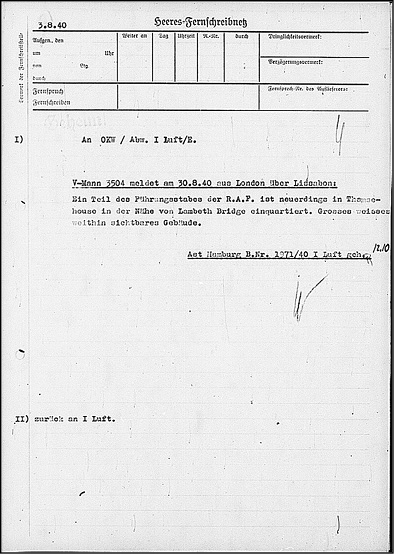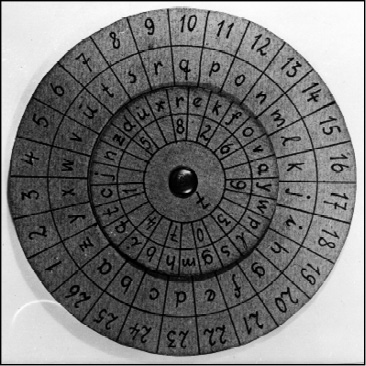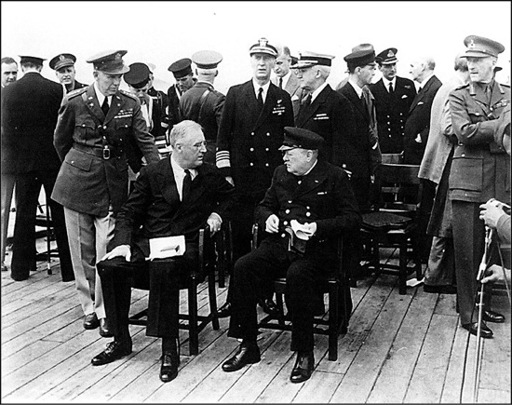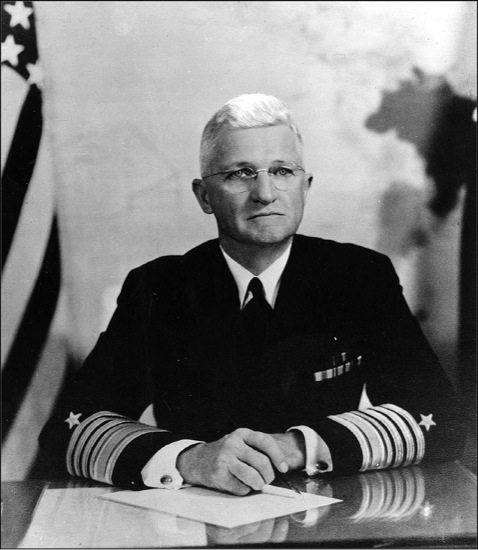Fighting to Lose (28 page)
Authors: John Bryden

At the beginning of August, a few days before he was to leave Lisbon for the United States, Popov turned in a lengthy note to MI6 that included the following:
Very often during recent months the Germans do not write any more to their agents in secret ink. They employ full stop marks. These are diminutive photographs of letters reduced to about this size: . It is possible to read the whole letter with a microscope. I received six for my trip to America. I will show them to J. I am doing what I can to arrange for the future correspondence with ivan ii with these full stops. The full stops are stuck on the interior of the envelope. I have marked on this envelope where the full stops have been stuck in my presence….29
The “J” stood for Ralph Jarvis, the MI6(V) officer for Portugal. His boss in London was Felix Cowgill, Menzies’s brittle counter-intelligence deputy. He would be looking forward to Jarvis’s report.
 Admiral Wilhelm Canaris, chief of the Abwehr, at dinner before the war with Reinhard Heydrich, head of the Nazi security service, the Sicherheitsdienst or SD. Despite the outward appearance of cordiality, Canaris considered Heydrich the most dangerous man in Germany after Hitler and Himmler.
Admiral Wilhelm Canaris, chief of the Abwehr, at dinner before the war with Reinhard Heydrich, head of the Nazi security service, the Sicherheitsdienst or SD. Despite the outward appearance of cordiality, Canaris considered Heydrich the most dangerous man in Germany after Hitler and Himmler.
© DIZ München GmbH, Süddeutsche Zeitung Photo / Alamy
 Abwehr document 11.2. 40: Major Ritter reports to Berlin that Arthur Owens, during their February 1940 meeting in Antwerp, claimed to have been given information “from someone known to him in MI5.” The note “Ast Hamburg III f hat” following the body of the message indicates that the information was passed over to the Abwehr’s counterespionage section, responsible for running penetration agents inside the enemy’s intelligence service. The teletype machine is printing J for I.
Abwehr document 11.2. 40: Major Ritter reports to Berlin that Arthur Owens, during their February 1940 meeting in Antwerp, claimed to have been given information “from someone known to him in MI5.” The note “Ast Hamburg III f hat” following the body of the message indicates that the information was passed over to the Abwehr’s counterespionage section, responsible for running penetration agents inside the enemy’s intelligence service. The teletype machine is printing J for I.
NARA
 Abwehr document dated 18.9.39: Ast Hamburg passes on to Berlin a report from A-3504 (Arthur Owens) indicating that the British are deploying an ultra shortwave device capable of detecting aircraft at very long range — radar. Abw I Luft/E is the Air Intelligence Section for England at Abwehr headquarters.
Abwehr document dated 18.9.39: Ast Hamburg passes on to Berlin a report from A-3504 (Arthur Owens) indicating that the British are deploying an ultra shortwave device capable of detecting aircraft at very long range — radar. Abw I Luft/E is the Air Intelligence Section for England at Abwehr headquarters.
NARA
 Abwehr document dated 3.8.40: The Luftwaffe is invited to bomb Thames House, a prominent and highly visible building in London said by this A-3504 message to house elements of the RAF staff. German intelligence understood it to contain the headquarters of MI5, but chose not to bomb it.
Abwehr document dated 3.8.40: The Luftwaffe is invited to bomb Thames House, a prominent and highly visible building in London said by this A-3504 message to house elements of the RAF staff. German intelligence understood it to contain the headquarters of MI5, but chose not to bomb it.
NARA
 Owens offers to again meet Major Ritter in Holland, but two days after he sent this message Hitler’s invasion of the Low Countries disrupts the plan. Spy and spymaster arrange a North Sea rendezvous instead.
Owens offers to again meet Major Ritter in Holland, but two days after he sent this message Hitler’s invasion of the Low Countries disrupts the plan. Spy and spymaster arrange a North Sea rendezvous instead.
NARA
 The 1940 pre-invasion spies. Top row: Diaz, Martinez, Meier, Krag. Second row: Jazequel, Kieboom, Waldberg, Pons. Third row: Coll, Eriksen, Hackverria, Van Dam. Bottom row: Walti, Drüke, Robles, Evertsen.
The 1940 pre-invasion spies. Top row: Diaz, Martinez, Meier, Krag. Second row: Jazequel, Kieboom, Waldberg, Pons. Third row: Coll, Eriksen, Hackverria, Van Dam. Bottom row: Walti, Drüke, Robles, Evertsen.
TNA
 Vera Eriksen a.k.a. von Schalburg offered herself to be shot instead if it would save the lives of her two companions. Werner Walti and Francois Karl Drüke (a.k.a. De Deeker) were executed anyway; she was interned.
Vera Eriksen a.k.a. von Schalburg offered herself to be shot instead if it would save the lives of her two companions. Werner Walti and Francois Karl Drüke (a.k.a. De Deeker) were executed anyway; she was interned.
TNA
 An incriminating possession. A ciphering disk such as this one found on Walti would never have been supplied to a real German spy. Cipher disks are proof of espionage intent, and guaranteed death for those caught with one if the target country executed spies. Britain did, and Walti was.
An incriminating possession. A ciphering disk such as this one found on Walti would never have been supplied to a real German spy. Cipher disks are proof of espionage intent, and guaranteed death for those caught with one if the target country executed spies. Britain did, and Walti was.
After the Battle / TNA
 The use of number ones written with a left-handed backstroke (see top of card) is a certain giveaway that the writer is European, not British. This is not a mistake the Abwehr’s false documents section would have made. The identity card is also without the appropriate rubber stamps. Walti was sure to be arrested the moment he had to show his papers.
The use of number ones written with a left-handed backstroke (see top of card) is a certain giveaway that the writer is European, not British. This is not a mistake the Abwehr’s false documents section would have made. The identity card is also without the appropriate rubber stamps. Walti was sure to be arrested the moment he had to show his papers.
After the Battle / TNA
 August 1941: Roosevelt and Churchill on the Prince of Wales off Newfoundland for their historic “Atlantic Meeting.” Behind, left, General George C. Marshall and behind, right, Admiral Harold R. Stark.
August 1941: Roosevelt and Churchill on the Prince of Wales off Newfoundland for their historic “Atlantic Meeting.” Behind, left, General George C. Marshall and behind, right, Admiral Harold R. Stark.
Lt. L.C. Priest / Royal Navy / Imperial War Museum
 Admiral Stark risked losing the entire Pacific Fleet at sea by not keeping Admiral Kimmel, the navy’s commander at Pearl Harbor, properly informed of Japanese intentions. Had Kimmel put the fleet to sea just before the surprise attack, it would have been sunk with some fifteen thousand sailors lost.
Admiral Stark risked losing the entire Pacific Fleet at sea by not keeping Admiral Kimmel, the navy’s commander at Pearl Harbor, properly informed of Japanese intentions. Had Kimmel put the fleet to sea just before the surprise attack, it would have been sunk with some fifteen thousand sailors lost.
U.S. Navy
